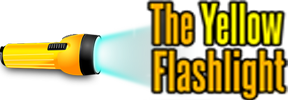Designers can build a reliable asset pipeline that automates favicons, generates social previews, and uses BlurHash placeholders to improve perceived loading. This guide explains why automation matters, which tools to choose, and how to connect design outputs to build systems so visual assets are consistent, fast, and easier to manage across teams and deployments.
Plan your asset pipeline for design automation

Start by mapping every image and icon your product needs. A clear inventory prevents duplicate work and enables design automation. List sizes, formats, and metadata for each role. Favicons should be square and at least 48×48 pixels, so record them.
Decide a single source of truth for the asset pipeline. Export conventions reduce questions from engineers. Keep consistent filenames and folders. Define 1x, 2x, 3x and SVG export settings.
- Consistent filenames and folder structure for each breakpoint and role
- Defined export settings per platform like 1x 2x 3x and SVG
- Manifest and meta templates for web apps and mobile
Record how social preview images are generated. BlurHash can automate low-res placeholders for previews and speed perceived loads. Decide where generation runs: in-app, CI, or at build time. Make guidelines so designers and engineers share the asset pipeline.
Small tools and scripts cut repetitive work. See our guide on automating repetitive exports with scripts and AI for examples. Run automated checks to catch missing sizes before release. Generate social preview images from the same master art.
Store rules in a manifest and sync with version control. Keep the asset pipeline alive with scheduled audits. Share examples of graphic design, tag your AI agents tasks, and lock the visual identity. Document the creative process around icons and logos. Note your branding strategy and archive digital artwork. List preferred design tools and any photo booth templates used.
Automate favicons and multi icon sets — asset pipeline
Start with a single master vector file. Keep artboards clear. Export rules must be repeatable.
Use design automation to produce PNG, SVG, and apple touch icons in one build. Tools like RealFaviconGenerator can convert SVGs into proper touch images for mobile. Generate a multi-size .ico for legacy support.
Automation steps
- Create a master source file and marked export slices.
- Run a headless exporter or command line image tool in CI to emit sizes.
- Update manifest.json and template the HTML link tags with cache busting.
Integrate this into your graphic design system so everyone uses the same source. Slot the export step into the wider asset pipeline to avoid manual uploads. Small AI agents can validate contrast and sizes.
Also auto-create social preview images from the same master. That keeps thumbnails and icons cohesive for your visual identity. Simplify tiny exports for logos and treat favicons as real digital artwork. Use proven design tools and document the creative process. Even event assets like photo booth templates benefit from this flow. For a sample workflow, see our guide on automating repetitive design tasks.
Build social preview images and meta automation

Social visuals hook attention fast. Research shows posts with images get about 94% more views than text-only posts.
As a friendly tip, start with a reusable template. Use variable text layers for titles and tags. Keep safe zones and fallbacks. This makes graphic design feel predictable and polished.
Optimizing social preview images in your asset pipeline
Make your templates part of the asset pipeline. Render server-side or in CI. Export OG and Twitter sizes automatically. Tie generation to the CMS so creators do not export images manually.
Use simple automation patterns. Render in headless browsers or with image APIs. Version assets so CDNs cache correctly. Connect checks to limit visual regressions. This is practical design automation that saves hours.
- Design living templates with variable text.
- Output multiple meta sizes in one build.
- Provide clear fallbacks for thumbnails.
Combine this with tools and scripts. See our write-up on automating repetitive design tasks for sample workflows. Pair automation with lightweight QA. That helps protect AI agents, visual identity, and your creative process while producing reliable design automation outputs.
Also remember to include brand marks early. Export logos and follow your branding strategy. Keep copies of digital artwork and favorite design tools presets. For events, reuse photo booth templates as quick thumbnails.
Automated social previews improve speed, consistency, and shareability.
Use BlurHash for elegant low fidelity placeholders — design automation
graphic design teams can use BlurHash to show polished placeholders while images load. BlurHash converts images into tiny strings that decode into attractive blurs. Even Unsplash returns blur_hash data with photo objects to speed initial render.
Asset pipeline tips
- Generate BlurHash strings during image build or on upload to your CDN.
- Store the short hash alongside image metadata and responsive variants.
- Client-side decode into a blurred canvas or image while the real file loads.
Use design automation to run BlurHash generation in CI or at upload. You can tie it to resizing and meta tasks. See our guide about automating repetitive design tasks for examples. Include AI agents or simple scripts to trigger jobs when assets change.
Placeholders improve perceived speed for social preview images and reduce layout shift. They keep link previews stable during slow loads. Designers caring for visual identity and the creative process value that polish.
Combine BlurHash with responsive image generation in your asset pipeline. Now social preview images show a smooth blurred version first. Add automation so every upload emits hashes with responsive files.
Keep assets friendly to logos, branding strategy, and detailed digital artwork. Use compact hashes with your design tools. You can even use placeholders in event templates like photo booth templates.
Final words
A disciplined asset pipeline reduces repetitive tasks and raises visual quality. By automating favicons, producing social preview images from templates, and using BlurHash placeholders, teams deliver faster and more consistent UIs. Start small with naming conventions and one automation task, then iterate to cover more assets, making design automation part of everyday delivery.
